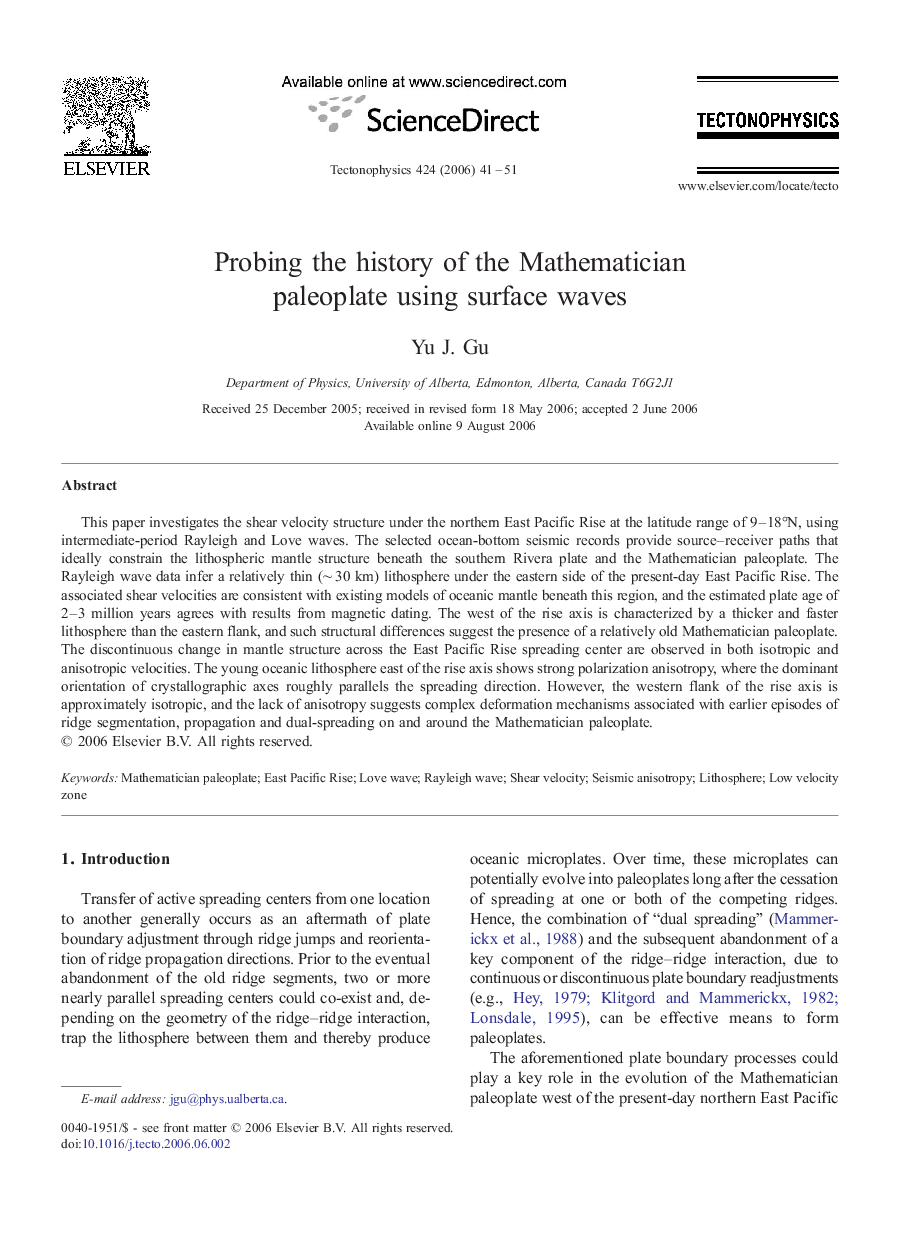| Article ID | Journal | Published Year | Pages | File Type |
|---|---|---|---|---|
| 4695047 | Tectonophysics | 2006 | 11 Pages |
Abstract
This paper investigates the shear velocity structure under the northern East Pacific Rise at the latitude range of 9-18°N, using intermediate-period Rayleigh and Love waves. The selected ocean-bottom seismic records provide source-receiver paths that ideally constrain the lithospheric mantle structure beneath the southern Rivera plate and the Mathematician paleoplate. The Rayleigh wave data infer a relatively thin (â¼Â 30 km) lithosphere under the eastern side of the present-day East Pacific Rise. The associated shear velocities are consistent with existing models of oceanic mantle beneath this region, and the estimated plate age of 2-3 million years agrees with results from magnetic dating. The west of the rise axis is characterized by a thicker and faster lithosphere than the eastern flank, and such structural differences suggest the presence of a relatively old Mathematician paleoplate. The discontinuous change in mantle structure across the East Pacific Rise spreading center are observed in both isotropic and anisotropic velocities. The young oceanic lithosphere east of the rise axis shows strong polarization anisotropy, where the dominant orientation of crystallographic axes roughly parallels the spreading direction. However, the western flank of the rise axis is approximately isotropic, and the lack of anisotropy suggests complex deformation mechanisms associated with earlier episodes of ridge segmentation, propagation and dual-spreading on and around the Mathematician paleoplate.
Keywords
Related Topics
Physical Sciences and Engineering
Earth and Planetary Sciences
Earth-Surface Processes
Authors
Yu J. Gu,
